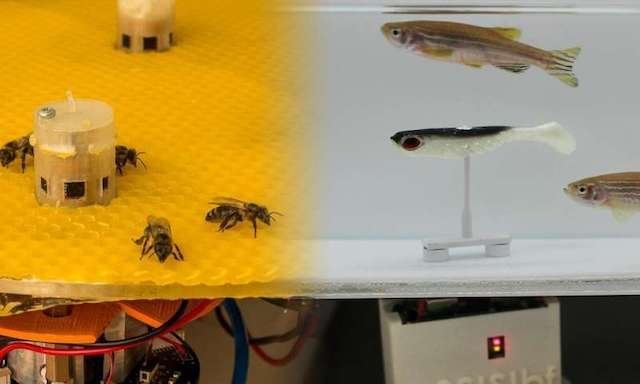
In a new study, researchers built a new bridge between the two animal communities – fish and bees.
With help from spy robots, the two different types of animals could communicate with each other and make decisions together.
The research was conducted by a team from Ecole Polytechnique Federale de Lausanne (EPFL) and four other European universities.
In the study, the team helped the two species transmitted signals back and forth to each other and gradually began coordinating their decisions.
The robots can blend into groups of animals and influence their behavior. The team has tested their robots on many animals, including cockroaches, chicks and fish.
One robot could infiltrate a school of fish in a circular aquarium and get them to swim in a given direction.
In the study, the team connected the robot and school of fish with a colony of bees in a laboratory in Graz, Austria. The two animal groups were 700 kilometers apart.
The robots within each group of animals sent signals specific to that species.
The robot in the school of fish sent visual signals in terms of different shapes, colors and stripes and behavioral signals like vibrations and tail movements.
The robots in the bee colony sent signals in the form of vibrations, temperature variations, and air movements.
Both groups of animals responded to the signals.
The fish started swimming in a given direction and the bees started swarming around just one of the terminals.
Then the robots recorded the dynamics of each group and exchanged the information with each other. They then translated the information received into signals for the corresponding species.
The team found that through robots, the two animal groups exchanged various information and gradually came to a shared decision.
After 25 minutes, the animal groups were synchronized. All the fish swam in a counterclockwise direction and all the bees had swarmed around one of the terminals.
The researchers suggest that their finding could help robotics engineers develop a better way for machines to capture and translate biological signals.
The study also helps with the understanding of animal behavior and how individuals within an ecosystem interact.
The team hopes they can develop methods for monitoring natural habitats by using animals’ sensory capabilities.
One author of the study is Frank Bonnet, a researcher at EPFL’s Mobile Robots Group (MOBOTS).
The study is published in Science Robotics.
Copyright © 2019 Knowridge Science Report. All rights reserved.



